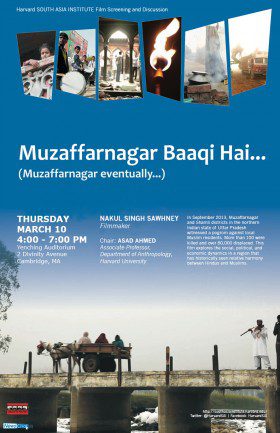Film Screening and Discussion
Nakul Singh Sawhney, Filmmaker
Chair: Asad Ahmed, Associate Professor, Department of Anthropology, Harvard University
In September 2013, Muzaffarnagar and Shamli districts in the northern Indian state of Uttar Pradesh witnessed a pogrom against local Muslim residents. More than 100 were killed and over 80,000 displaced. This film explores the social, political, and economic dynamics in a region that has historically seen relative harmony between Hindus and Muslims. What happened this time? The film cuts across multiple facets of violence that right-wing nationalism has wrought in north India: ‘honor’ politics, gender violence, caste and class polarization under the umbrella of Hindu-ness or Hindutva. The film also shows how non-Hindutva parties in the region play along with such polarizing rhetoric in the hopes of electoral windfalls in their favor.
In the midst of this violence, the film also narrates a growing resistance in Muzaffarnagar and Shamli, where the story has yet to be played out. ‘What will be the fate of Muzaffarnagar, eventually?’
Sawhney graduated from the Film and Television Institute of India in 2006. His films focus on labor, gender, and caste issues in north India.

